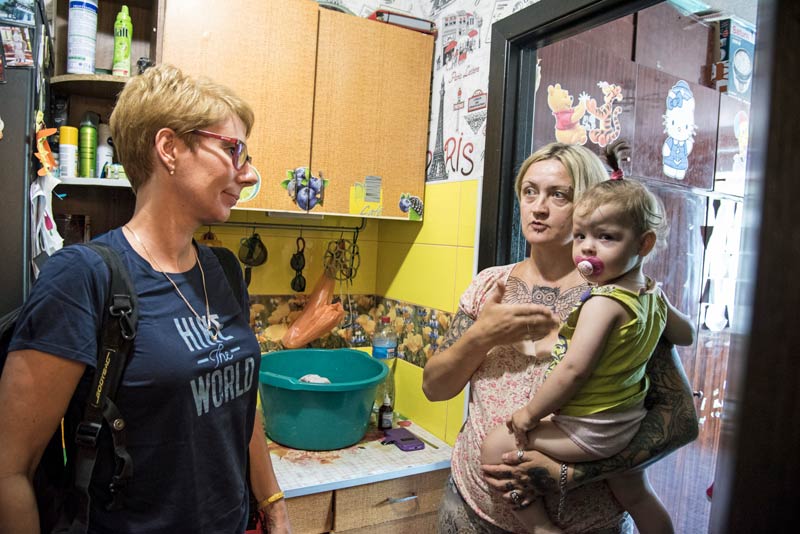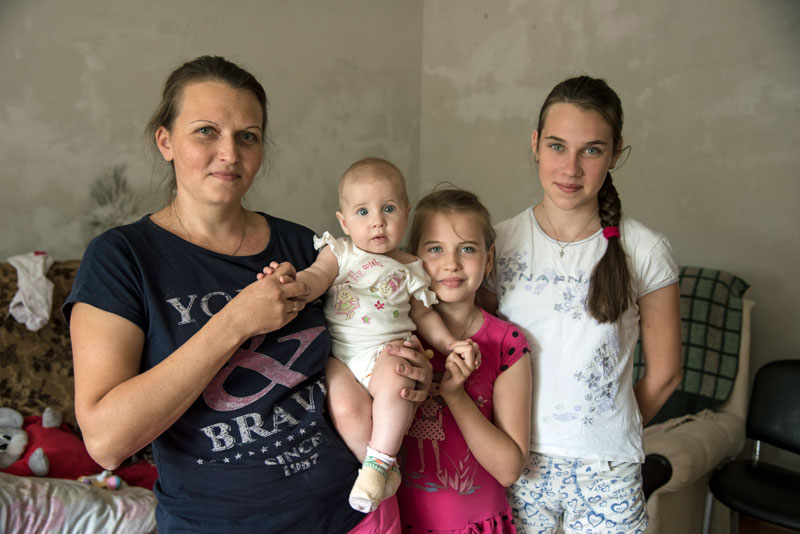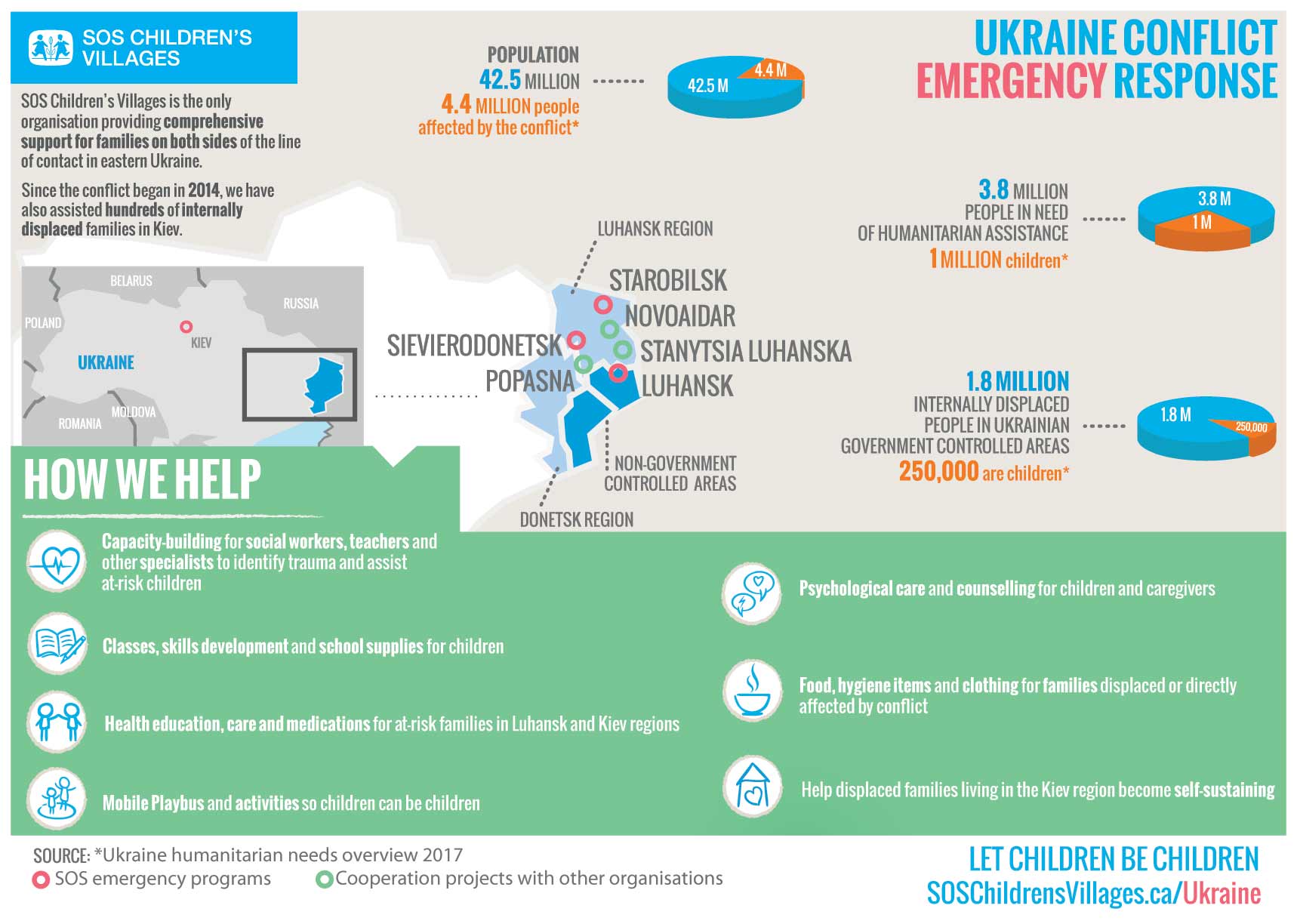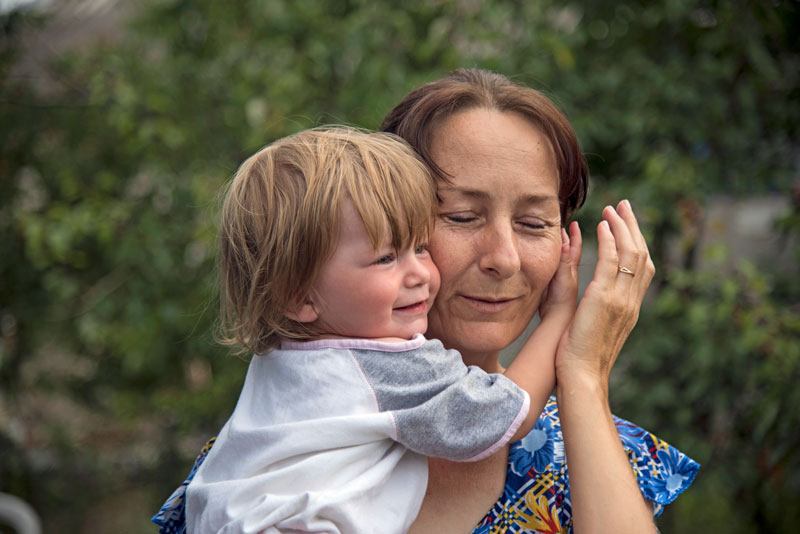In Ukraine the Displaced Help the Displaced

Many of the SOS Children’s Villages staff who help vulnerable families in Ukraine are themselves casualties of the conflict
This year marks the fourth anniversary since the start of the conflict in eastern Ukraine. Many of the SOS Children’s Villages employees who are supporting children and families know all too well the challenges and the trauma they face, having been forced to flee their homes or are themselves separated from loved ones.
“About 90% of our staff in the Luhansk program are internally displaced persons themselves,” says Yevgeniya Rzayeva, Project Manager for the emergency response program at SOS Children’s Villages Ukraine. “All of our management team, our coordinators, and many of our field staff are themselves displaced. … They have experienced difficult situations themselves, and at the same time they are helping and supporting others who are in the same condition.”

Since the start of the Ukraine conflict, SOS Ukraine has played an important role in helping children and families affected by the conflict in eastern Luhansk and Donetsk or who fled to other parts of the country. Sporadic fighting continues along the contact line that separate the conflict parties.
“The war is ongoing and puts pressure on these families and on the children,” says Ms Rzayeva. “There is no a single family that does not suffer from this situation and the environment where they live.”

SOS Ukraine’s emergency response project works on both sides of the contact line in the Luhansk region, including the city of Luhansk, which is in the non-government controlled territory, and Starobilsk, Sievierodonetsk and Stanitsa Luhanskaya that are controlled by the Ukrainian government.
A program to assist around 700 families who were displaced by the conflict and relocated to the Kiev area ended in December 2017. At-risk households that were part of that project continue to receive family strengthening support from SOS Children’s Villages.
Thousands of People Supported
The emergency response project provides emotional and health care, family strengthening, humanitarian help, educational support and activities for children. More than 5,000 children and adults have been supported.
Ms Rzayeva has been Project Manager for the emergency project in Ukraine since August 2017 and previously worked with vulnerable families in the Donetsk region that borders Luhansk. Ms Rzayeva is now based in Kiev and travels regularly to programs in the conflict zones. She, along with her son and mother, are among those who were displaced by the fighting and struggles with her separation from her home and relatives who still live in Donetsk.
“Our work demands a lot of mental and emotional effort, in order to do the job well,” she explains. “But when you see the results of our work, when you are able to help a child or a family in need, you get such a good feeling. It gives power, hope and optimism. It gives me the inspiration to go further and do more.”

Q&A with Yevgeniya Rzayeva, SOS Emergency Project Manager
In the following Q&A, Ms Rzayeva explains more about what SOS Children’s Villages is doing today in Ukraine.
Q: What is the biggest impact SOS Children’s Villages has had in its emergency response?
A: SOS Children’s Villages Ukraine is the only organisation to provide holistic support to families on both sides of the line of contact. The work of other organisations, our partner organisations, is very important. They may provide food or educational support or child friendly spaces for displaced families. But what makes SOS Children’s Villages different is our individual approach. Our social workers know the individual families, their problems, their successes and they work together to identify their needs through an individual development plan. We work to ensure that each family has access to the support it needs, on an individual basis. Where we cannot ourselves provide a very specific kind of service, we identify partners that can.
During this conflict, we have supported more than 5,000 children and adults. One of our main goals is to prevent the separation of families, to prevent children from losing parental care. Our work to keep families together and what we do to support them in such a risky environment is impressive.
Q: Many people have lost their home, their school, maybe even friends or family in this conflict. What is life like for the families living near the contact line?
A: SOS Children’s Villages works in the areas controlled by the Ukrainian government, those outside their control and areas along the line of contact between these two zones.
The challenges faced by families and children on both sides are almost the same: they face psychological problems, trauma, fear and family separation. There is only one checkpoint between the zones, in Luhansk city and near Stanitsa Luhanskaya. This checkpoint is only for pedestrians and it is very complicated procedure to go through. Sometimes it can take ten or twelve hours to cross. It is a very difficult situation for people who may have family on both sides.
The war is ongoing and puts pressure on these families and on the children. There is no a single family that does not suffer from this situation and the environment where they live.
Q: What impact does this situation have on the children and families?
A: In the first two years of this conflict, people had some hope that the conflict would end soon. But time passed and nothing has changed. Some of the people I speak to are waiting for the conflict to end so they can go back home. Others are scared about an escalation of the conflict. It’s a very sensitive position because people don’t know what to expect. Nobody knows, and this uncertainty makes the impact very serious.
I also talk to people who are more optimistic. They have gotten used to the circumstances and don’t want to look back at what happened. They have decided to start a new life either in Luhansk region or in other areas, and they are making arrangements to buy houses or they want to settle into their new community.
But in both cases – those who still live in uncertainty and those who are trying to accept their new lives – we are seeing the effects of trauma and the impact of war. That is why our work is so important – working closely with families to provide the support needed to address the trauma of what has happened.
Q: Are there enough schools to handle all the children whose families are displaced?
A: The main displacements took place in 2014 and 2015, in the first two years of the conflict. At first the host communities were not ready for such a large number of people. But the problems with school capacity were largely solved and the situation today is more or less stable.
The problem today is kindergarten capacity, especially in small villages and settlements. There was not enough space in kindergartens even before the displacement crisis. I have visited a lot of families in rural areas and the kindergarten-age children are staying home. This affects the families since one parent may not be able to work because there is no kindergarten, or the closet one is too far away.
Q: An estimated 1.8 million people have been displaced by the conflict with many living in or near Kiev. The SOS Children’s Villages emergency project in Kiev ended in December 2017, after two years of support. At there still at-risk families in need of help?
A: Many of these families arrived after the conflict began and were offered material, educational and psychological support. By the end of our project, we had provided assistance to more than 700 families and nearly 1,300 children in the Kiev region. Many of these families were able to settle down– they have found jobs and homes in Kiev or the region around the capital.
About 20 families who were still in need were transitioned from our emergency program into family strengthening and are still supported by SOS Children’s Villages Ukraine. We are committed to helping these families build a better future.
Q: What are the challenges of working in the kind of divided environment we see in Ukraine?
A: About 90% of our staff in the Luhansk program are internally displaced persons themselves. All of our management team, our coordinators and many of our field staff are displaced. They have to wait for hours to cross the checkpoint, to go from one side of the line of control to the other. They have experienced difficult situations themselves, and at the same time they are helping and supporting others who are in the same condition.
That is why we give a lot of attention to the psychological support or our own staff in the Luhansk region. We help them so they in turn can do their jobs. Their dedication and determination under difficult personal and working conditions is remarkable.
Q: On a personal level, what is it like working in such a polarised situation?
A: I’m from Donetsk, and like many other colleagues, my family and I are displaced. My son, mother and I had to flee our home. We are all in Kiev, but I still have relatives living in Donetsk. The situation is very difficult.
Our work demands a lot of mental and emotional effort, in order to do the job well. But when you see the results of our work, when you are able to help a child or a family in need, you get such a good feeling. It gives you power, hope and optimism. It gives me the inspiration to go further and do more.

Background the Emergency Response in Ukraine
SOS Ukraine’s emergency response project works on both sides of the conflict: in Luhansk region, including the city of Luhansk, which is in the non-government controlled territory; and Starobilsk, Sievierodonetsk and Stanitsa Luhanskaya that are controlled by the Ukrainian government.
More than 5,000 children and adults have been supported through emotional and health care, family strengthening, humanitarian help, educational support, and activities for children.
Around 700 families who were displaced by the conflict and relocated to the Kiev area were helped in the first years, and 20 at-risk households continue to receive family strengthening support from SOS Children’s Villages.
Learn more about the SOS Children's Villages' emergency response in Ukraine.
SOS Children’s Villages in Ukraine
In addition to the emergency response in Ukraine, Children without parental care find a loving home in one of the SOS families. The families have the legal status of "foster families" and receive all the support they need from SOS Children's Villages. We also provide short-term care for children in crisis situations. The children stay with us (usually less than six months) until they can return to their families, or move to another form of family-based care. Learn more about SOS Children's Villages in Ukraine.
How You Can Help
To help the emergency response program, please donate to the Ukraine Conflict Fund
To help SOS continue to provide loving homes to orphaned and abandoned children, please sponsor a child a child in Ukraine or make an individual or monthly gift.
